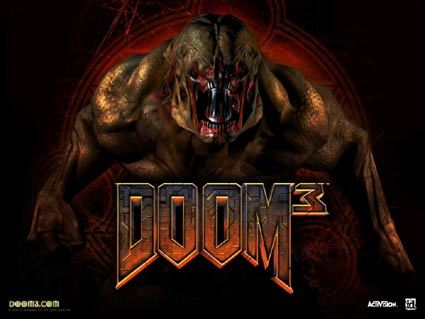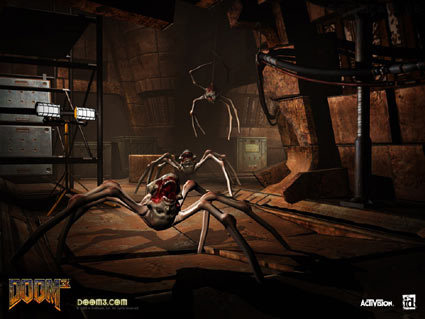Doom 3 Video Card Requirements
id explains the video card memory requirements to play Doom 3 at certain quality levels. You need a not yet released 512 MB video card to play the game at the highes stettings! The minimum is a 64 MB card.
id Software's programmer Robert Duffy updated his .plan file and among other things, he explains the graphics requirements for the upcoming game Doom III.
In short, here's which requirements are needed for the different quality setups of the game:
Ultra Quality (max. quality): for 512 MB video cards. Each texture; diffuse, specular, normal map at full resolution with no compression.
High Quality: for 256 MB video cards. Uses compression ( DXT1,3,5 ) for specular and diffuse and no compression for normal maps. This looks very very close to Ultra quality but the compression does cause some loss.
Medium Quality: for 128 MB video cards. Uses compression for specular, diffuse, and normal maps. This still looks really really good but compressing the normal maps can produce a few artifacts especially on hard angled or round edges.
Low Quality: for 64 MB video cards. It does everything medium quality does but it also downsizes textures over 512x512 and we downsize specular maps to 64x64 in this mode as well.
Get Tom's Hardware's best news and in-depth reviews, straight to your inbox.
Roberts explanation on video card requirements, taken from the .plan file:
Image fidelity is dependent on what quality level we load the textures at.
In Ultra quality, we load each texture; diffuse, specular, normal map at full resolution with no compression. In a typical DOOM 3 level, this can hover around a whopping 500 MB of texture data. This will run on current hardware but obviously we cannot fit 500 MB of texture data onto a 256 MB card and the amount of texture data referenced in a give scene per frame ( 60 times a second ) can easily be 50 MB+. This can cause some choppiness as a lot of memory bandwidth is being consumed. It does however look fantastic :-) and it is certainly playable on high end systems but due to the hitching that can occur we chose to require a 512 MB Video card before setting this automatically.
High quality uses compression ( DXT1,3,5 ) for specular and diffuse and no compression for normal maps. This looks very very close to Ultra quality but the compression does cause some loss. This is the quality that for instance the PC Gamer review was played in.
Medium quality uses compression for specular, diffuse, and normal maps. This still looks really really good but compressing the normal maps can produce a few artifacts especially on hard angled or round edges. This level gets us comfortably onto 128 MB video cards.
Low quality does everything medium quality does but it also downsizes textures over 512x512 and we downsize specular maps to 64x64 in this mode as well. This fits us onto a 64 MB video card.
One thing of note on the normal map compression is that generally speaking if you DXT a normal map you get really crappy results. NVIDIA hardware supports palettized compression which yields good compression and normal maps retain hard and round edges really well. Unfortunately this compression does a poor job in other cases and you end up getting splotchy areas. ATI does not support the palettized compression so we needed a better solution. ATI had done some research on various methods of normal map compression and we ended swapping the red and alpha ( which is zero in the case of a normal map ) channels. This effectively allows the compression to do a much better job and is just one extra instruction in the fragment program to move the alpha channel into the red channel. The bottom line on what happens on each card is as follows.
All modern NVIDIA and all ATI hardware use the compressed normal maps in Medium and Low qualities with the swizzled components.
NV10/20 hardware ( GF4MX and GF3 ) uses palettized normal maps in Medium and Low qualities.
Another question I have had multiple emails about, yes the game is capped at 60fps for normal game play. For render demos we run those at full tilt which is why you will see > 60fps.


